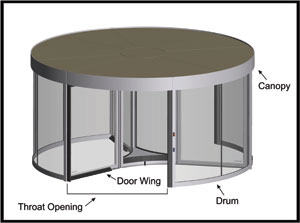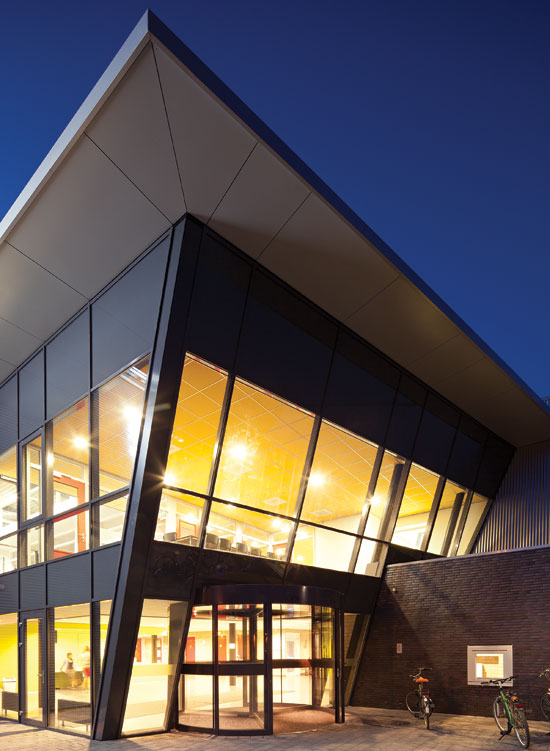The Ins and Outs of Revolving Doors
Learning Objectives:
- Describe how revolving doors save energy and reduce air infiltration.
- Discuss the features of revolving doors that ensure user safety.
- List key elements of capacity and their influence on user comfort.
- Properly specify revolving doors for various building types.
Credits:
Let's face it. The built environment is an energy guzzler. The U.S. Green Building Council states that U.S. buildings have a considerable impact on natural resources. Buildings account for 40 percent of primary energy usage and 72 percent of electricity consumption as well as 32 percent of CO2 emissions and 13.6 percent potable water consumption. The type of doors selected can have a big impact on a building's energy profile. Revolving doors can be eight times as energy efficient as their hinged counterparts—all while allowing large numbers of people to pass in and out, boosting security, and adding architectural interest to even the grandest façade. This article will discuss the green features of revolving doors and consider design elements as they relate to user comfort and safety. Also covered will be code requirements and a checklist of must-dos in properly specifying a revolving door for a given project.
The ABCs of Revolving Doors
A revolving door typically consists of doors that hang on a central shaft and rotate around a vertical axis within a cylindrical enclosure called a drum. There are usually two, three, or four panels called door wings which typically incorporate glass. The opening of the drum enclosure is referred to as the throat opening.

Image courtesy of Boon Edam
Manual revolving doors rotate with pushbars, causing all wings to rotate. Large-diameter revolving doors rotate automatically and can accommodate strollers, wheel chairs, and wheeled luggage. A speed control or “governor” mounted in either the ceiling or the floor prevents moving the doors at an unsafe speed. Automatic revolving doors are powered above or below the central shaft, or along the perimeter. Sensors in the door wings and the enclosure frame ensure that the speed with which the door revolves is limited. Other sensors can prevent or minimize the force of impact of the door wing on users. These settings can be customized to suit a building's specific requirements; for applications where children, elderly people, or people with special needs form a large part of the user profile, preventing any impact is paramount.

Image courtesy of Boon Edam
Revolving doors can be eight times as energy efficient as their hinged counterparts, while boosting throughput, security, and architectural interest.










